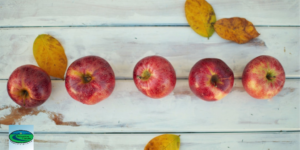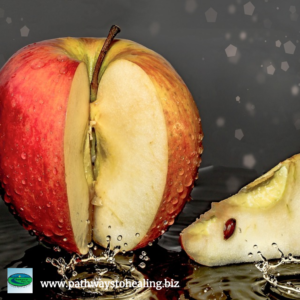By Dr. Alyssa Musgrove
 When people hear the word “detox,” they often think of drug addicts or alcoholics undergoing therapy to rid themselves of toxins they have put into their bodies. However, these days, it’s becoming more common for people to mention a “detox” (or “cleanse”) in terms of a specific diet program to help rid their bodies of chemicals and toxins, while also encouraging weight loss. This time of year, after all the guilty indulgences of the holidays, people are particularly motivated to “clean up their act.” Many of these detox programs are tempting since they offer a “quick fix” and fast weight loss.
When people hear the word “detox,” they often think of drug addicts or alcoholics undergoing therapy to rid themselves of toxins they have put into their bodies. However, these days, it’s becoming more common for people to mention a “detox” (or “cleanse”) in terms of a specific diet program to help rid their bodies of chemicals and toxins, while also encouraging weight loss. This time of year, after all the guilty indulgences of the holidays, people are particularly motivated to “clean up their act.” Many of these detox programs are tempting since they offer a “quick fix” and fast weight loss.
There are many trendy detoxification plans and programs that promise miraculous results, but are they really healthy and is a detox all about losing weight? The truth is, most detoxes marketed in the media are not healthy — especially the ones that focus on eating or drinking one thing during the course of the cleanse. One example is the “Master Cleanse,” where you drink only lemon water with maple syrup and cayenne pepper for several days. Naturally, you will lose weight, and lemon water is good for cleansing the body. However just doing this alone is not good for your health.
The purpose of a good detox program should be to improve and optimize your body’s own detoxification systems and cleanse the body from the inside out — not just on losing weight. Done correctly, a detox helps decrease the number of toxins we put into our bodies, while also supporting our body’s detoxification and elimination systems with the nutrients it needs to function properly.
We live in a toxic world and are inundated with a myriad of chemicals on a daily basis. Many times, when we think of environmental toxins, we visualize smog over a city, cigarette smoke, exhaust fumes from a car, or pollution from a factory smokestack. What we fail to realize, is that most of our toxic exposure is found indoors rather than outdoors. Like sponges, our bodies absorb toxins from the air we breathe, from the foods we eat, from personal care products we use on our skin and from the toxic things we touch. Municipal water supplies have been found to contain more than 2,100 chemicals. Non-organically grown foods contain pesticides, herbicides and chemicals that our bodies will store in fat cells when they cannot be detoxified. Processed foods are filled with synthetic chemicals such as flavorings, dyes, preservatives, bleaching agents and artificial sweeteners.
 Toxins build up over time and can impact the function of our bodies, leading to symptoms such as fatigue, joint pain, sinus congestion, headaches, constipation, diarrhea, gas, cravings, stubborn weight loss, acne, skin problems and PMS. Environmental toxins can even affect a growing baby in the womb. According to a report by the Environmental Working Group, blood samples taken from umbilical cords were tested and found to contain over 287 contaminants including mercury, pesticides, DDT and even fire retardants, which can alter learning ability, memory, behavior and hearing.
Toxins build up over time and can impact the function of our bodies, leading to symptoms such as fatigue, joint pain, sinus congestion, headaches, constipation, diarrhea, gas, cravings, stubborn weight loss, acne, skin problems and PMS. Environmental toxins can even affect a growing baby in the womb. According to a report by the Environmental Working Group, blood samples taken from umbilical cords were tested and found to contain over 287 contaminants including mercury, pesticides, DDT and even fire retardants, which can alter learning ability, memory, behavior and hearing.
Doing a good detox once or twice a year can help cleanse and improve the body’s detoxification systems. Some simple steps you can take are:
1 Choose to drink pure, refreshing spring water, or quality filtered water, rather than tap water. Water is the body’s most important nutrient, and our body’s natural detoxification process is dependent on good water.
2 Choose to eat REAL FOODS, meaning foods found in nature that can be picked, gathered and hunted. Processed food is filled with a multitude of chemicals. “The less doctored your food, the less doctoring you will need.”
3 Choose to breathe quality air by avoiding exposure to exhaust fumes and secondhand smoke. Wait inside the airport terminal rather than outside on the curb, and limit walking or exercising along busy streets. Studies have shown a relationship between increased pollution and increased plaque in carotid arteries.
4 Choose more natural, environmentally friendly cleaning products. Something as simple as vinegar and water can be used for windows, mopping floors and various other cleaning chores. You can also find quality choices in grocery stores or health food stores.
 5 Choose to exercise. Exercise increases the oxygen in your tissues, improves elimination, builds the strength of bones, muscles and joints, and helps us to sweat, which is important in helping eliminate toxins from the body. We have two to three million sweat glands in our skin. The skin is our largest organ of elimination and sometimes referred to as our “third kidney.”
5 Choose to exercise. Exercise increases the oxygen in your tissues, improves elimination, builds the strength of bones, muscles and joints, and helps us to sweat, which is important in helping eliminate toxins from the body. We have two to three million sweat glands in our skin. The skin is our largest organ of elimination and sometimes referred to as our “third kidney.”
6 Choose a healthy supplement. Taking a good quality multivitamin and mineral supplement can help your body function more optimally. Also, taking a good quality supplement to support your organs of detoxification is important and beneficial while doing a quality detoxification program.
7 Choose to relax. Getting your body and mind into a relaxed state on a daily basis helps to calm you and improve your body’s detoxification systems.
Choose to “clean up your act” this year with healthy detoxification. If you are interested in receiving a toxicity questionnaire and a list of healthy food replacements that will help you in cleansing your body, please email me at pathwaysth@gmail.com or call 706-454-2040.
 Pathways to Healing specializes in holistic chiropractic care. Dr. Alyssa Musgrove draws on a variety of techniques, including chiropractic, kinesiology, nutrition, food allergy testing and lifestyle counseling to assist clients in achieving optimal health and wellness in one setting. In addition, the practice is committed to being a valuable source of information so that people can learn how to live a healthy lifestyle and prevent future illness. Pathways to Healing is located at 1022 Founders Row, Lake Oconee Village, Greensboro, GA.
Pathways to Healing specializes in holistic chiropractic care. Dr. Alyssa Musgrove draws on a variety of techniques, including chiropractic, kinesiology, nutrition, food allergy testing and lifestyle counseling to assist clients in achieving optimal health and wellness in one setting. In addition, the practice is committed to being a valuable source of information so that people can learn how to live a healthy lifestyle and prevent future illness. Pathways to Healing is located at 1022 Founders Row, Lake Oconee Village, Greensboro, GA.



